
11 Days Sichuan-Tibet Tour from Chengdu to Lhasa via G318 National Highway
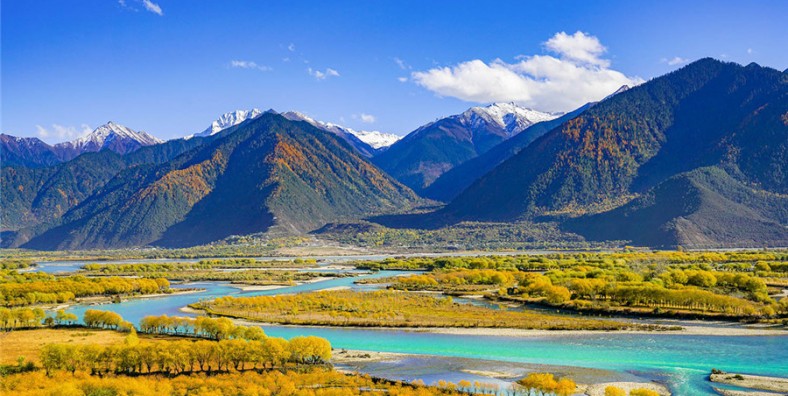
Tour Overview
This 11 days Sichuan-Tibet Tour from Chengdu to Lhasa via G318 National Highway is the best itinerary recommend for tourists from Southeast Asia. Chengdu is the bestgateway city to Tibet. The...
Code of Tour: YCT0000013768
Length of Travel: 11 Day
Destinations of Tour: Chengdu - Kangding - Xinduqiao Bridge - Litang - Markam - Zogang - Ranwu - Nyingchi - Lhasa
Departure City: Chengdu
Price of Tour: Request
Type of Tour:
Features of Tour: Nature Culture Minority Landscape
This 11 days Sichuan-Tibet Tour from Chengdu to Lhasa via G318 National Highway is the best itinerary recommend for tourists from Southeast Asia. Chengdu is the bestgateway city to Tibet. The G318 National Highway, known as the most beautiful and riskiest road in China, is a haunting route that every adventurous self-driving fan wants to try. This tour will take you to explore the breathtaking landscapes of majestic gorges, rugged peaks, massive pastures, turbulent rivers, as well as lush forests and spectacular glaciers. It is an epic road trip covering around 2100 km in around 8 days. You will overcome the dramatic topographical change from the low basin to the roof of the world. After arriving in Lhasa, a 2-day sightseeing in this holy city will be a perfect ending of this tour.
Highlights:
- Drive along the most beautiful and riskiest road in China-G318 National Highway.
- Drive from the low Sichuan Basin to the roof of the world -Tibet Plateau.
- Meet snown mountains, tranquil lakes, shimmering rivers, Tibetan villages and rare animals out of your window.
- Explore the breathtaking landscapes on your way.
- Experience the Tibetan Budddism in the main monasteries in Lhasa.
Brief Itinerary
- Day 1: Chengdu Arrival
- Day 2: Chengdu-Xinduqiao
- Day 3: Xindouqiao-Batang
- Day 4: Batang-Zogong
- Day 5: Zogong-Rakwa Tso
- Day 6: Rakwa Tso-Bomi
- Day 7: Bomi-Nyingchi
- Day 8: Nyingchi-Lhasa
- Day 9: Lhasa
- Day 10: Lhasa
- Day 11: Lhasa Departure
Google Map
Detailed Itinerary
Day 1 Chengdu Arrival
Sightseeing and Activities:Chengdu Arrival
Accommodation:Chengdu
Meals:None
When international flight lands in Chengdu, meet your local tour guide and driver and then transfer to the hotel. The rest of the day free for you to be on your own. Overnight in Chengdu.
Day 2 Chengdu – Ya’an – Luding – Kangding – Xinduqiao Bridge (410km, around 10h)
Sightseeing and Activities:Sightseeing along the way
Accommodation:Xinduqiao
Meals:Breakfast, Lunch
Get up in the early morning, drive from Chengdu to Xinduqiao via Ya’an at about 7AM. As we travel against the flow of Dadu River, upper reaches of Yangtze River, you will pass the first soaring peak on Tibetan Plateau, i.e. Zheduo Mountain (mountain pass 4298m). Instantly, the entire scenery starts to invite you in. Upon seeing exotic Tibetan villages, lush pastures, and grazing yaks, bobbling brooks and fluffy clouds over deep blue sky, you find it hard to move your eyes away from the windows of tour vehicle. Keep heading west, after winding roads, we finally end up in Xinduqiao, known as a paradise for photography.
Day 3 Xinduqiao – Yajiang – Litang – Haizishan Mountain – Batang (400km)
Sightseeing and Activities:Sightseeing along the way, Ka’ er Monastery
Accommodation:Batang
Meals:Breakfast, Lunch
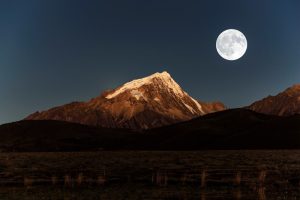
Waking up in soft and tender sunlight in the early morning, we are about to leave Xinduqiao. Traversing the picturesque bridge, tranquil local villages, exotic Tibetan houses, yellow poplar trees, we head westwards to the valley of Yalong River. En route, we will pass the famous Yajiang and finally arrive in Litang (4000m). Situated on the Qinghai-Tibetan Plateau, the city of Litang is natural grassland, dotted with grazing yaks, sheep, and nomad’s tents. In summer, blossoming flowers all over the fields form another gorgeous sight.
Besides, you can visit the Ka’er Monastery in Litang. A prestigious Gelugpa Monastery, the entire monastery is built along the mountain, with varied heights. Then, we will pass Haizishan Mountain (4700m) and finally reach Batang County. Stay overnight in Batang.
Day 4 Batang – Jinsha River (upper reaches of Yangtze River) – Markam – Lawu Mountain – Dongda Mountain – Zogong (260km)
Sightseeing and Activities:Sightseeing along the way
Accommodation:Zogong
Meals:Breakfast, Lunch
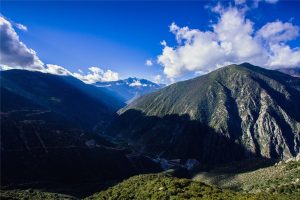
Today, we begin to enter the region of Tibet. Our tour vehicle will pass through three renowned rivers, namely Jinsha River, Lancang River and Nu River, all originating from the rivers of Tanggula Mountains. As the raging torrent pounds jagged mountains in deep valley, you can hear the roaring sound of nature. Undoubtedly, this part of the road is treacherous.
Keeping moving westwards, we will pass Lawu Mountain (4358m) and Dongda Mountain (5008m). Standing on the lofty mountain passes, you can take in the spectacular views of wandering Sichuan-Tibet highway and Lancang river crawing through mountain ranges. At night, we will arrive in Zogong. Stay overnight in Zogong.
Day 5 Zogong – Bangda Grassland – Yela mountain (Nu River Mountain) – Seventy-two Bends – Baxoi–Rawok Lake (200km)
Sightseeing and Activities:Sightseeing along the way
Accommodation:Rawok Lake
Meals:Breakfast, Lunch
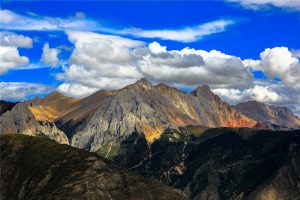
Today, we will continue our adventure to the next destination of Rakwa Tso. We will first pass Bangda Grassland, one of the most important pastures in Tibet. This place is quite enchanting, decorated with tender flows of river, boundless grass, flocks of yaks and horses, and nameless wild flowers and lushes.
After a short visit to Bangda Grassland, we will overcome the precipitous Yela Mountain (4839m), the most dangerous natural barrier on Hengduan Mountain Range. Then following the famous Seventy-two Bends, we will descend to the shore of Nu River. Keeping moving westwards, we will enter a world of snow-capped mountains, pristine forests and idyllic villages. The altitude change could reach 2500m from the mountain pass to the valley bottom, thus you can experience 4 seasons just in a single day. At night, we will reach Rakwa Tso. Stay overnight at Rakwa Tso.
Day 6 Rakwa Tso – Midui Glacier – ParlungTsangpo – Bomi (250km)
Sightseeing and Activities:Sightseeing along the way, Rawok Lake, Parlung Tsangpo Lake, Midui Glacier
Accommodation:Bomi
Meals:Breakfast, Lunch
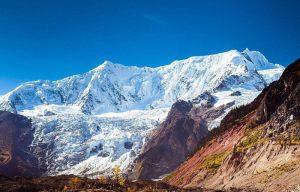
Rawok Lake is a typical seasonal glacial lake in Chamdo, serving as source of Parlung Tsangpo Lake. Stretching westwards for about 10 km, this narrow river slowly plunges into a huge canyon. The flickering light of Rakwa Tso shows incredible beauty, with the snow-capped peaks and primeval forests afar as the background.
Leaving the amazing Rakwa Tso behind, we will hit the road and traverse dense forest and turbulent Parlung Tsangpo, until reaching Bomi. On the way, you can visit the Midui Glacier, famed as the most beautiful glacier in China. It is also known as the only glacier with the lowest altitude in the world. Stay overnight in Bomi.
Day 7 Bomi – Tongmai – Lulang Forest – Sejila Mountain (Mt. NamchaBarwa) – Nyingchi (230km)
Sightseeing and Activities:Sightseeing along the way, Parlung Tsangpo Canyon,Lulang Forest
Accommodation:Nyingchi
Meals:Breakfast, Lunch
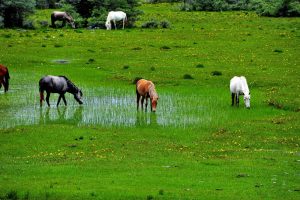
Following the wide valley, we venture into the canyon of Parlung Tsangpo. The canyon and its surroundings form an earthly paradise, where you can see raging torrent, gushing waterfalls one after another. Then, we will head to the renowned Lulang Forest. Covering an area of 15 square kilometers on the plateau, this charming forest is full of vibrant shrubs, pine trees and spruces. At the foot of the mountain, the local Tibetans live besides the brooks. We can visit local Tibetan village, meet the locals and enjoy some local snacks there.
Standing at the viewing platform of Lulang, You will enjoy the stunning panorama views of Mt. NamjaBarwa(7782m). We will have a short stay at the Sejila Mountain Pass (4728m), where you can view the colorful leaves on the mountain in autumn. After that, we will move westwards to Nyinchi, the biggest city in eastern Tibet. If you come in spring, you will see beautiful peach flowers in full bloom at the foot of the forest. Stay overnight in Nyingchi.
Day 8 Nyingchi – Lhasa (420km)
Sightseeing and Activities:Sightseeing along the way
Accommodation:Lhasa
Meals:Breakfast, Lunch
Today, we will take our final drive of this road trip. Following the Nyang River, we keep moving west to the final destination, Lhasa. On the way, we will see the different scenery, featuring idyllic pastoral scene along the valley. After passing Mila Pass (5013m), we will finally arrive in Lhasa valley. The magnificent Potala Palace standing on the Red Hill will appear in your sight. Upon arrival, we will check in hotel for a good rest. Stay overnight in Lhasa.
Day 9 Lhasa Tour
Sightseeing and Activities:Poyala Palace, Jokhang Temple, Barkhor Street, Tibetan Family
Accommodation:Lhasa
Meals:Breakfast, Lunch, Dinner
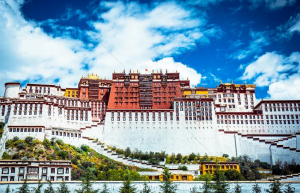
Today, you’ll pay a visit to the famous Potala Palace, the world culture heritage. You can explore its audience halls, the jeweled and Golden burial chortens (stupa Tombs) of past Dalai Lamas, and tremendous number of Buddhist frescoes, Thangkas, combinations of mandala, etc.
Then tourists will head to the holiest temple in Tibet, the Jokhang Temple, built during Songtsen Gampo’s reign by princess Wencheng of Tang dynasty, 647 A.D. Here you can observe sincere pilgrims making prostration in front of Jokhang Temple. While entering inside the temple, you can see the holiest statue of Buddha. Around the monastery is the famous Barkhor Street, where you can do the kora with pilgrims and locals. And then we’ll go to explore the old market and you may have chance to see the traditional jewelry trading between people from different part of Tibet.
Finally, you’ll taste Tibetan tea with locals in tea house and enjoy a welcome dinner at night. Stay overnight in Lhasa.
Day 10 Lhasa Tour
Sightseeing and Activities: Drepung Monastery, Carpet factory, Sera Monastery
Accommodation:Lhasa
Meals:Breakfast, Lunch
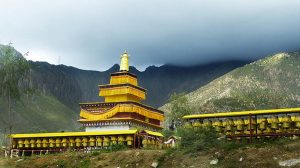
In the morning, you are going to visit Drepung Monastery which was one of the “three greet” Gelug monasteries of Tibet and was founded in 1416 by Jamyang choge, one of the Tsongkhapa’s main disciples. Ganden palace is used as Dalai lama’s palace in the Drepung before moving to the Potala palace.
Afternoon, Sera Monastery—It was one of the “three great” Gelug monasteries of Tibet and was founded in 1419 by Jamchen chojey, one of the Tsongkhapa’s main disciples. The highlight is the Monks debate at around 3 – 5 in the afternoon. Stay overnight in Lhasa.
Day 11 Lhasa Departure
Sightseeing and Activities:Departure from Lhasa
Accommodation:None
Meals:Breakfast
Enjoy your free time before be transferred to the airport for the departure flight to next station.
Recommended Hotels
| Destination | 5 Star | 4 Star | 3 Star |
| Chengdu | Sofis Jinyuan Hotel | Celebrity Ruicheng Hotel | Rest Hotel |
| Xinduqiao | Yangzongling Hotel | Cloud Top Starry Sky Hotel | Kangding Qingfeng Hotel |
| Batang | / | Pengcheng Yingbin Hotel | Junyue Hotel |
| Zuogong | / | Yue Xi Hotel | Shengfangdajiudian |
| Rawo | / | Zichen Boyue Hotel | Mi Tu Hotel |
| Bomi | / | Minshan Shanxia Hotel | Wangshi Hotel |
| Nyingchi | / | Nyingchi Shangbala Hotel | Nyingchi Shanshui Hotel |
| Lhasa | Luxury St. Regis Lhasa Resort | Lhasa Gang Gyan Hotel | Lhasa Xiongbala Hotel |
Service Included:
- Admission fees for all of the sightseeing spots listed in the itinerary;
- Meals as listed in the itinerary;
- Accommodation with breakfast as listed in the itinerary;
- Private English-speaking tour guide and vehicle for transfers & sightseeing;
- Service charge & government taxes;
- Luggage transfers between airports and hotels;
- Two bottles of mineral water each day.
Service Excluded:
- Any arrival and departure international airfares or train tickets;
- Chinese visa fees;
- Excess baggage charged by Airlines;
- Single room supplement;
- Tips to guides and drivers;
- Personal expenses and gratuities to service staff;
- Personal travel insurance;
- All optional programs;
- Domestic air tickets fares with airport tax and fuel extra fee based on economy class mentioned in the program.
Travel Tips:
- Tibet Permits
There are several permits required to visit Tibet. Tibet Entry Permit, issued by Tibet Tourism Bureau, is the most important one which has to be obtained before your trip because you must have it to take your flight/train to Tibet. To get the permit, you have to book a Tibet tour with us, and send us your passport and Chinese visa about 20 days in advance, and then let us apply for the permit (all Tibet permits can only be applied by travel agency). If you travel to other prefectures like Shigatse, Nyingchi, Shannan, etc, you also have to obtain an Alien Travel Permit. If you travel to Mount Everest, you have to obtain a Border Permit. (Tibet Discovery, with office in Lhasa, has always kept up with the latest news on Tibet Permits. Traveling with us, all your permits are guaranteed as long as you are qualified to the requirements.)
- Available Months to Visit Tibet
Generally speaking, May to early October is the best time to for a Mount Kailash trip. July and August are the peak season and rainy season. It may be too cold to travel in Kailash area from November to March. There is usually heavy snow. The conditions in Namtso Lake and Mount Everest area are quite similar with Kailash. While other places like Lhasa, Gyantse and Shigatse are suitable for travel all year around.
- High Altitude Sickness
The average altitude of Tibet is about 4000 meters above the sea level (Lhasa: 3700m; EBC: 5200m; Namtso: 4718m). You may suffer a bit from High Altitude Sickness in the beginning days of your Tibet trip if you haven’t had rich high plateau travel experience. But don’t worry too much, the high altitude can be acclimatized usually in 2~3 days. Our suggestion is to take a physical examination and get suggestions from your doctor, and also bring some medicines to prevent from High Altitude Sickness before your trip. While in Tibet, you should keep warm all the time, avoid strenuous activities, drink more water and eat more vegetables and carbohydrates. You’d better not take showers during the first two days after your arrival at Tibet. If you don’t feel well, get help from your tour guide or go to the hospital without any delay.
- How to Go to Tibet
Basically you have two options – flight and train. Currently, you can take a flight to Lhasa from Beijing(4.5hrs), Xian(3.7hrs), Chengdu(2.5hrs), Chongqing(3hrs), Kuming(3hrs), etc. Among all these cities, Chengdu and Xian have more frequent flights to Lhasa. Kathmandu also has several flights to Lhasa each week.
If you a train travel, you can take a train to from Beijing(40.5hrs), Xian(32hrs), Chengdu(43hrs), Shanghai(47hrs), Chongqing(42hrs), Lanzhou(25hrs), Xining(22hrs), Guangzhou(54hrs).
- Packing and Wearing Ideas
Firstly you can’t forget your passport and Chinese Visa. A large backpack and a smaller one are recommended (the smaller one can be used for daily activities). Also bring the necessary medicine you need. Other stuffs like sunglasses, snow glasses, hats, lip balm, sun block are recommended. As for wearing, you are suggested to dress in layers (both thin and thick jackets). Down jacket is necessary in Spring and Autumn. A pair of durable and comfortable shoes is necessary.

















